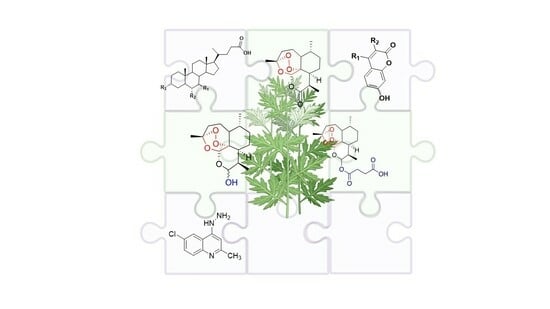Molecular Hybridization as a Strategy for Developing Artemisinin-Derived Anticancer Candidates
Abstract
Share and Cite
Marchesi, E.; Perrone, D.; Navacchia, M.L. Molecular Hybridization as a Strategy for Developing Artemisinin-Derived Anticancer Candidates. Pharmaceutics 2023, 15, 2185. https://doi.org/10.3390/pharmaceutics15092185
Marchesi E, Perrone D, Navacchia ML. Molecular Hybridization as a Strategy for Developing Artemisinin-Derived Anticancer Candidates. Pharmaceutics. 2023; 15(9):2185. https://doi.org/10.3390/pharmaceutics15092185
Chicago/Turabian StyleMarchesi, Elena, Daniela Perrone, and Maria Luisa Navacchia. 2023. "Molecular Hybridization as a Strategy for Developing Artemisinin-Derived Anticancer Candidates" Pharmaceutics 15, no. 9: 2185. https://doi.org/10.3390/pharmaceutics15092185
APA StyleMarchesi, E., Perrone, D., & Navacchia, M. L. (2023). Molecular Hybridization as a Strategy for Developing Artemisinin-Derived Anticancer Candidates. Pharmaceutics, 15(9), 2185. https://doi.org/10.3390/pharmaceutics15092185










